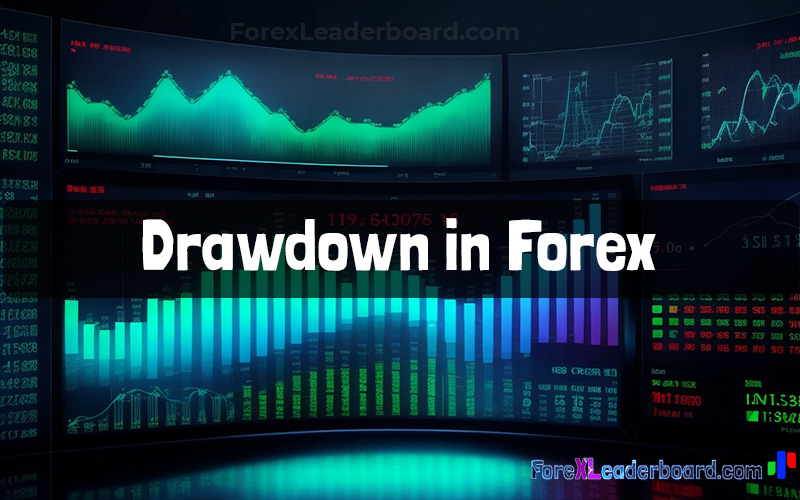The ups and downs of currency markets can lead to drastic drawdowns that wipe out forex trading profits. Learning how to manage drawdown is critical for long-term success. This comprehensive guide covers everything you need to know about drawdown in forex, including strategies to minimize and recover from losing streaks.
What is Drawdown in Forex Trading?
Drawdown refers to a decline in your trading account balance from peak to trough. For example, if your account grew from $10,000 to $15,000, then dropped to $12,000, you would have a $3,000 or 20% drawdown.
Drawdowns occur when you hit a series of losing trades. The greater the losses compound, the deeper the drawdown becomes. All traders face drawdowns, but the key is managing them so they don’t wipe out all your capital.
Why Do Drawdowns Happen in Forex?
There are several reasons you may face a drawdown period in forex trading:
Market Volatility
Increased market volatility raises unpredictability and makes it harder to time trades correctly. Volatility spikes can lead to quick succession of losing trades.
Overleveraging
Using excess leverage magnifies losses when trades go wrong. This accelerates drawdown compared to trading without leverage.
Poor Risk Management
Lack of proper risk management, such as not using stop losses or taking disproportionate risks can allow drawdowns to accumulate.
Trading Psychology
Emotions like greed and fear cause suboptimal trading decisions. Going on tilt after losses or holding on to losing positions too long creates deeper drawdowns.
Fundamental Shifts
Major fundamental changes in economic conditions, geopolitics, or central bank policy can quickly turn the markets against your favor.
Drawdown Metrics to Know
Understanding drawdown requires looking at a few key metrics:
Peak-to-Valley Decline
Measures the retracement from highest equity point to lowest equity point in percentage and dollar terms.
Length
Duration from start of equity decline to lowest point. Indicates how long drawdowns persist.
Recovery Time
How long it takes equity to return to the previous peak after bottoming out. Faster recovery is better.
Worst Case Drawdown
The largest peak-to-valley drawdown experienced. Provides an idea of maximum risk.
Sequence of Returns
Order and combination of winning and losing trades. Consecutive losses worsen drawdowns.
Impact of Drawdowns on Forex Trading Performance
Drawdowns significantly influence long-term profitability in forex trading:
- Drawdowns decrease your equity, reducing capital available for trading.
- Long drawdowns can wipe out previous gains entirely.
- Repeated drawdowns make it hard to build equity consistently.
- Drawdown risk may cause you to scale back position sizes, limiting upside.
- Deep drawdowns test your confidence and discipline as a trader.
Containing drawdowns is key to maximizing gains over the long-run.
Strategies to Minimize and Manage Forex Drawdown
You can implement several strategies to reduce drawdown size and recovery time in forex trading:
Use Appropriate Leverage
Lower leverage reduces exposure and prevents trades hitting stop loss from wiping out your account. Use max 5:1 leverage initially.
Money Management
Proper money management is crucial. Only risk 1-2% of capital per trade. Have clear stop losses on every trade.
Avoid Overtrading
Overtrading after a string of losses increases drawdown risk. Stay patient after closing losing trades.
Trade Smaller Position Sizes
Go back to demo trading or trade micro lots during drawdown periods to minimize further losses.
Take Regular Profit
Bank partial profits along the way – don’t expect to win huge on one trade. Small gains compound over time.
Diversify Strategies
Combine fundamental and technical analysis. Use multiple chart time frames. Diversify trading style.
Stay Disciplined
Stick to your trading plan and rules even when facing losses. Don’t let emotions take over.
How to Recover from Drawdown
When faced with deep drawdown, here are strategies to regain lost equity:
Step Back and Reassess
Take a break from active trading. Review your trading journal and analyze losses critically to improve.
Focus on Strong Setup Trades
Look for high probability setups with clear chart patterns and confirmations to rebound.
Reduce Position Sizes
Go back to demo or use micro lots to rebuild confidence before increasing position size.
Paper Trade New Strategies
Research and backtest new strategies that may perform better in current market conditions.
Change Time Frames
Shift from higher time frames to shorter ones or vice versa for new setups.
Improve Risk Management
Tighten stop losses, use options to define risk, and alter reward/risk ratios.
Pay Yourself
Withdraw profits regularly so portfolio growth isn’t completely eroded during drawdowns.
Change Markets
If current market conditions don’t fit your trading style well, switch to others with more movement.
Avoid the Vicious Drawdown Cycle
Without the right mindset and discipline, traders can get caught in a vicious cycle:
- Growing equity leads to overconfidence and loosening risk controls.
- Hitting a drawdown causes desperation trading to recover losses quickly.
- Reckless trading results in even bigger losses, starting the cycle again.
The key is staying grounded at all times and sticking to proven risk management principles.
Maintain a Long-Term Perspective
It’s said trading is a marathon, not a sprint. Losing patience and discipline after drawdowns is precisely what derails progress. Maintain a long-term perspective instead of focusing on short-term P&Ls.
Over time, sticking to sound risk principles and honing your edge will deliver results. Drawdowns are just part of the trading journey.
In Summary
Markets will always swing up and down. Drawdowns are inevitable in forex trading. But by following smart money management, diversifying your trading, and implementing a structured recovery system, you can minimize drawdown size and length.
Losses are the tuition you pay to improve as a trader. As long as risk is controlled, drawdowns simply require patience and perseverance to overcome. With the right knowledge and discipline, traders can manage periods of drawdown and continue progressing towards success.

